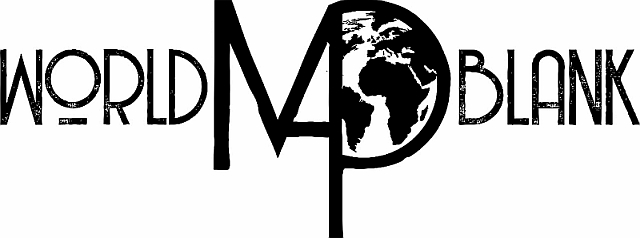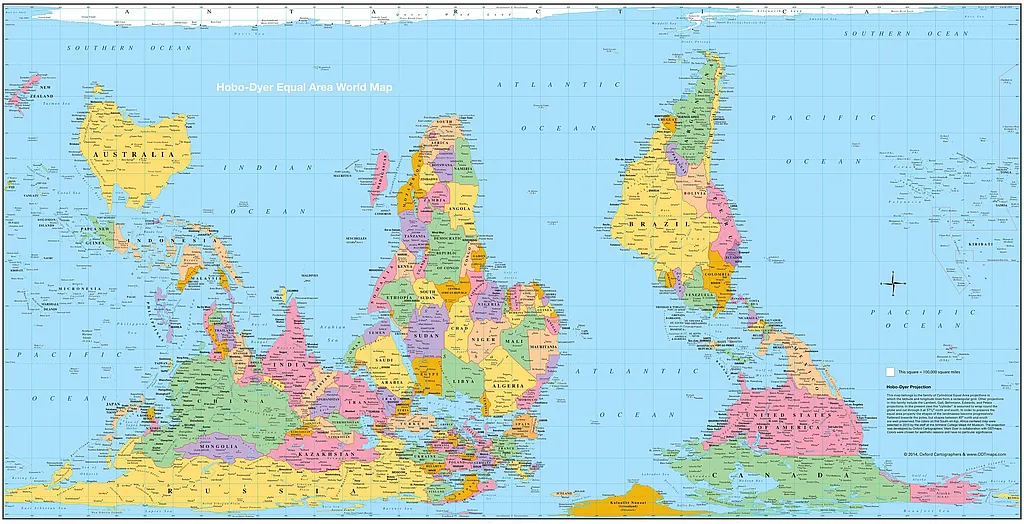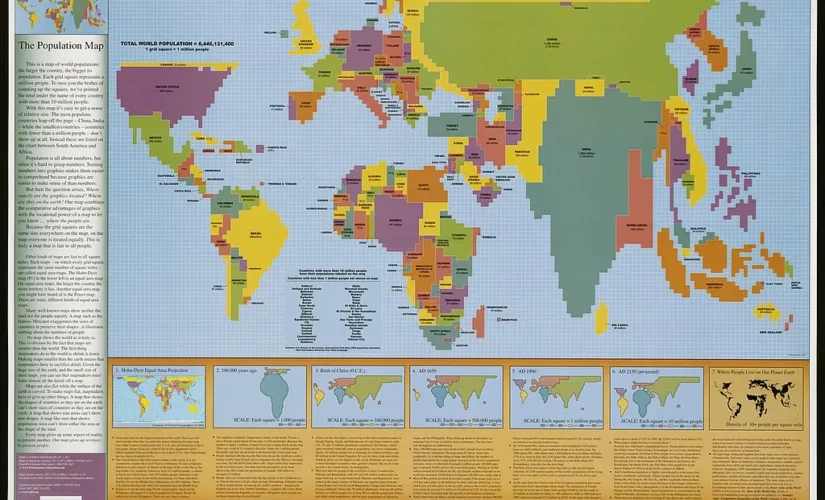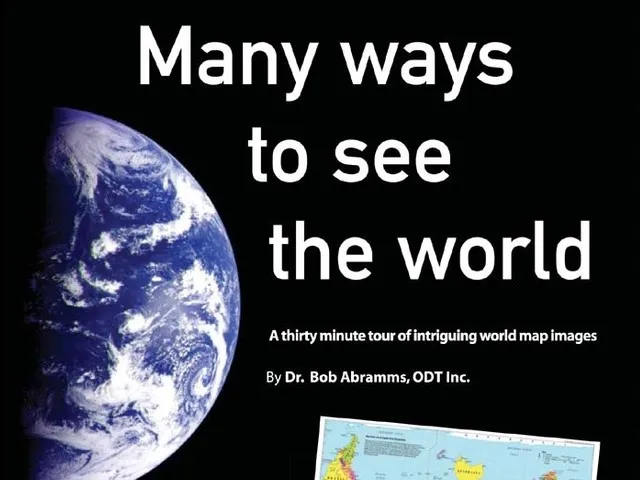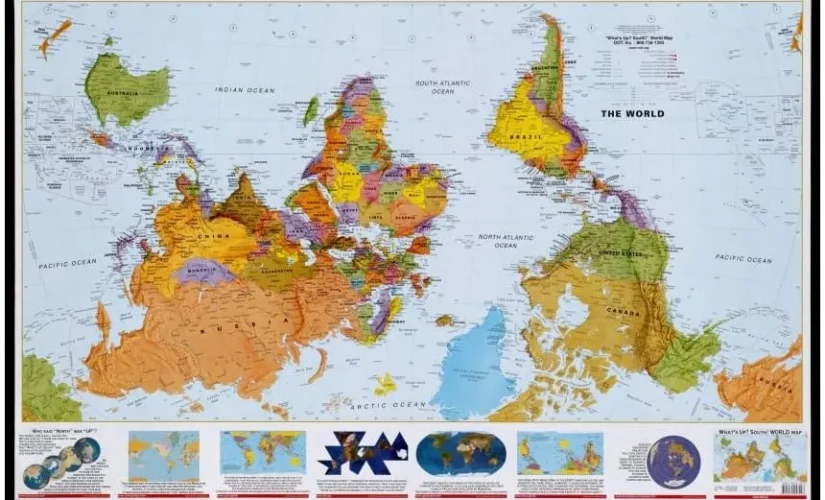The Hobo-Dyer Equal Area Projection Map
The Hobo-Dyer world map, crafted to redefine global perceptions, showcases true size comparisons while simultaneously inverting traditional North-South orientations. The brainchild of ODT, Inc., this map projection was established in the tradition of the Peters concept of equal area. While it echoes the intent of the Peters projection map, it distinctively offers less elongation but more compression at the poles.
Initially conceived by British cartographer Mick Dyer, the Hobo-Dyer projection was commissioned by ODT, Inc., its origins tracing back to modifications of the 1910 Behrmann projection. Behrmann’s projection featured standard parallels situated at 30° north and south. In a stark deviation, the Hobo-Dyer projection assumes a cylinder that wraps around the globe, intersecting it at 37½° north and south.
As an active member of the Cylindrical Equal Area projection family, the Hobo-Dyer projection shares a rectangular grid format with its latitude and longitude lines, akin to other projections in the family like Lambert, Gall, Behrmann, Edwards, and Peters. The uniqueness of the Hobo-Dyer map lies in its maintenance of the equal area property through progressive flattening of the landmasses towards the poles while successfully preserving shapes between 45° north and south, creating a balance that makes it visually appealing.
The Hobo-Dyer world map projection, a normal cylindrical equal-area projection, presents standard parallels at 37.5° north and south of the equator, thus eliminating north-south or east-west distortion. Named after Howard Bronstein, Bob Abramms, and Mick Dyer, the map’s creation was championed by Bronstein and Abramms of ODT, Inc. in 2002 and took form under the expert drafting of Dyer.
In a bid to offer a fresh perspective, ODT printed the Hobo-Dyer map on two sides, the first presenting the conventional north upwards and the reverse flipping this notion with the south on top. The geographical alteration is subtle but invites viewers to confront their inherent biases and question how our maps shape our perception of the world.
In addition, Australia is prominently placed in the center of the map. The design decision illustrates the impact of shifting the “centering” and challenges the viewers’ impression of significance on a global scale. The goal of this equal-area presentation echoes that of other similar projections, such as the Gall-Peters; however, the Hobo-Dyer is described as being more aesthetically pleasing due to its reduced vertical stretching of lower latitudes and greater compression at the poles.
The Hobo-Dyer map projection garnered global attention when President Jimmy Carter utilized it to illustrate his agency’s international efforts during his Nobel Peace Prize ceremony in December 2002. The map delineated the global locations of the Carter Center, cementing its unique place in cartographic and geopolitical history.
